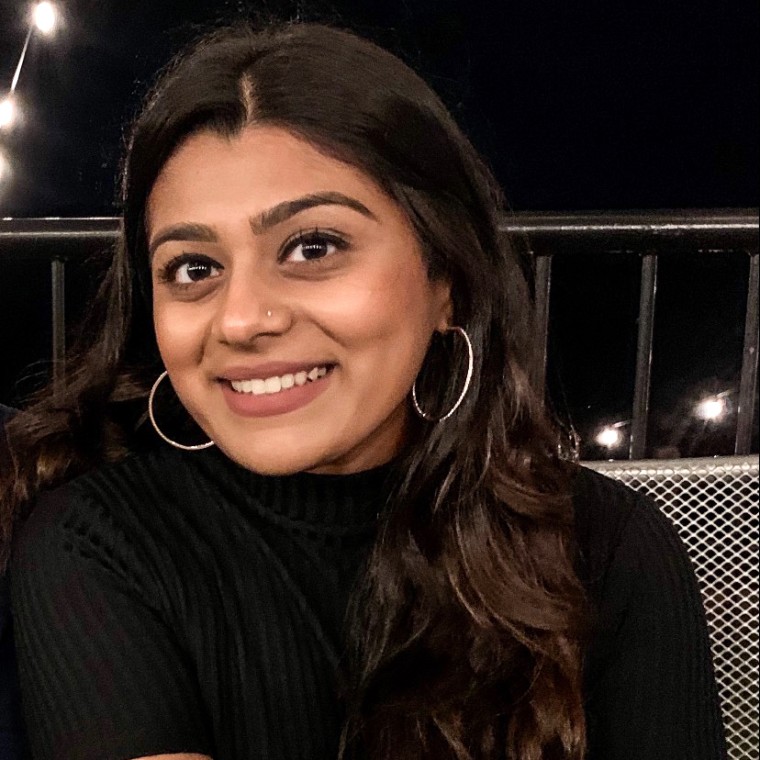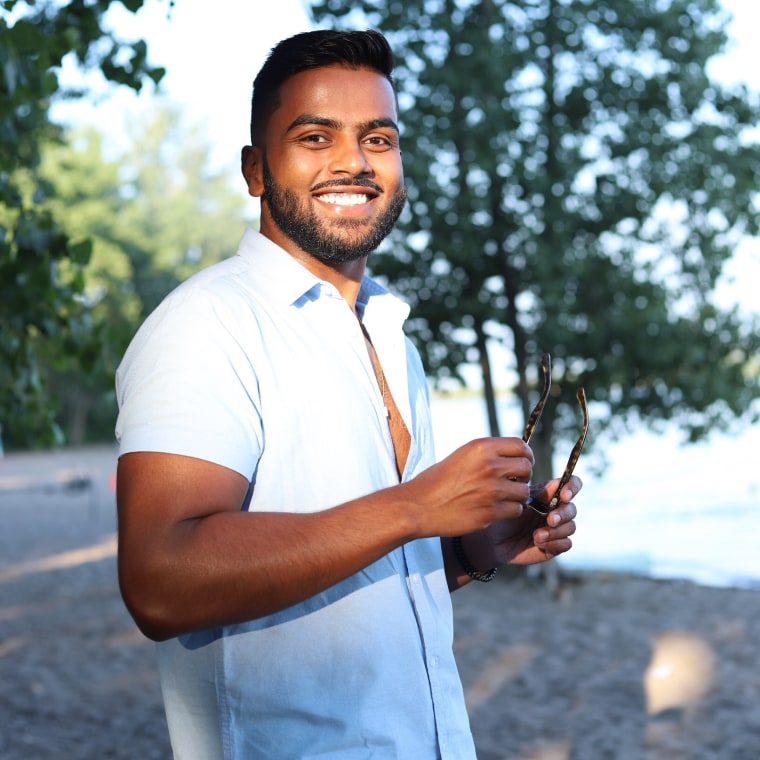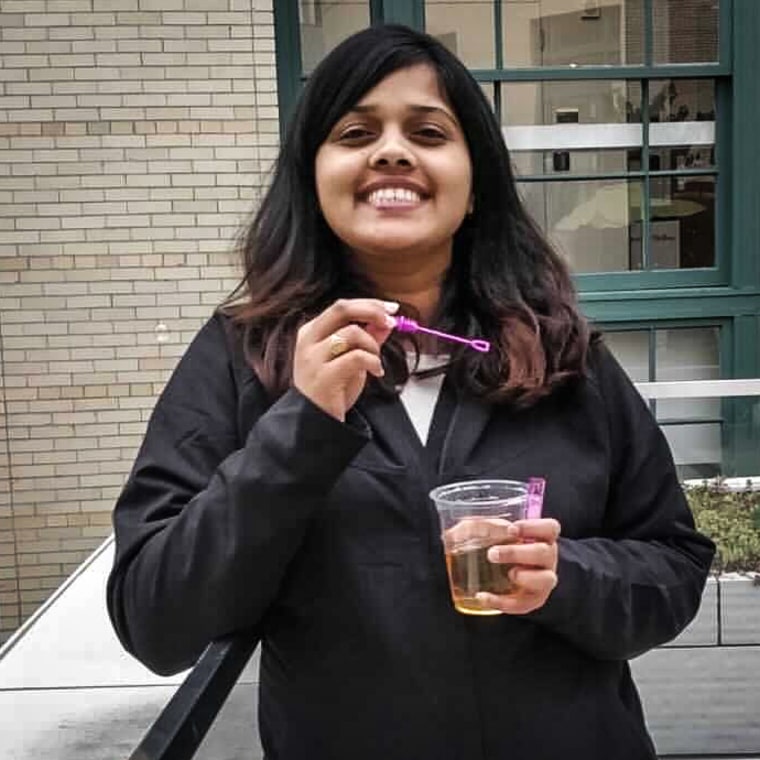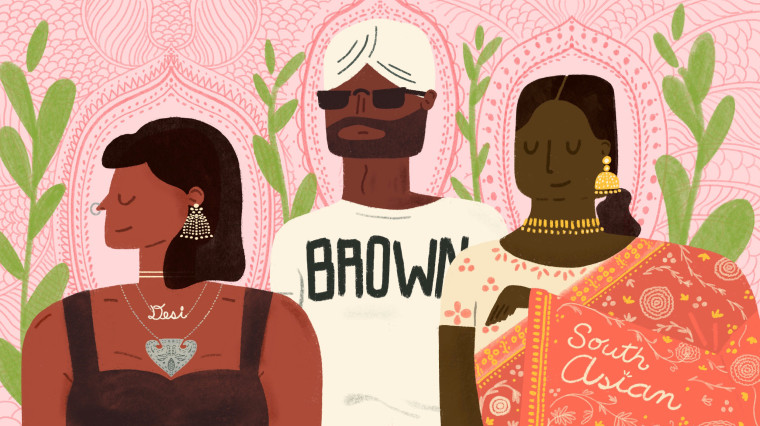Over the last several decades, the diaspora of the Indian subcontinent has been labeled, relabeled and lumped together too many times to count. Indian and Pakistani immigrants were known as “Black” in 1980’s United Kingdom. The U.S. census classified them as “white” in 1970, and a host of transnational solidarity movements have cycled them through lengthy acronyms and broad umbrella terms.
“South Asian,” “brown” and “Desi” are three that are dominant today. For some, they’re apt names to describe inherently similar cultures and a connected history. Others say they paint over a vast array of peoples who make up the subcontinent and its diasporas. Erasure is rampant, some say, and it happens inside “South Asian” circles as much as outside them.
The debate has raged online for years — when referring to the diaspora, should we be as specific as possible or as inclusive as possible? And is there a way to do both?
The three terms sometimes don’t do what they were intended to, experts say, and it’s important to note that they don’t always mean the same thing.
“They each have a place, but they don’t entirely encompass each of the others,” said Jasvir Singh, an activist who is a co-founder of South Asian Heritage Month in the U.K.
Historians say that to look forward, it’s important to understand how people in the Western world came to view the community the way they do. North Indian culture is what people in the U.S. are most familiar with — butter chicken and naan, Hindi speakers, Bollywood music. Although they don’t represent a majority of people in the subcontinent, they’re tropes many in the diaspora feel they’ve had to conform to — for example, Bangladeshis in New York City have historically labeled their restaurants as “Indian” to attract more customers.
“South Asian” was coined to combat that mindset, said Sunaina Maira, a professor of Asian American studies at the University of California, Davis.
‘South Asian’ as an inclusive coalition
Maira said she remembers when the term “South Asian” first became popular after she moved to the U.S. from India for college.
“It brought all of these national groups together who otherwise, in the subcontinent, would not have been interacting,” Maira said. “Coming from India, I had never really met Pakistanis or Bangladeshis or Sri Lankans.”
Meant to encompass people with roots in Afghanistan, Bangladesh, Bhutan, India, Nepal, Pakistan, Sri Lanka and the Maldives (and within each country tons of distinct languages and cultures), the term “South Asian” was introduced in transnational movements in the ’80s.
Indo-Caribbeans and the diasporas in East Africa were also ushered into the movement and are now considered part of the label, Maira said.
Denali Nalamalapu, 26, who is South Indian American, said “South Asian” isn’t a single identity. When she describes herself or others, she likes to be regionally specific so everyone feels their backgrounds are being fully acknowledged.
“‘South Asian’ and ‘Desi’ exclude a lot of others on the subcontinent,” she said. “I’m wary of contributing to the notion that all South Asians are Indian.”
Saying she’s from Andhra Pradesh, the state in India from which her family originates, might go over some people’s heads, she said. So when she is asked about her background, she tends to identify herself as “South Indian,” and that feels both holistic and distinct.
“When I talk to friends who are North Indian, it could be as if I’m talking to friends from, really, anywhere in Asia,” she said. “It often feels to me like different countries.”
Nalamalapu said she thinks those in the U.S. also tend to recognize only North Indian culture when they think about South Asians. “They’re like, ‘What’s your favorite Bollywood movie?’” she said. “I don’t watch Bollywood. I watch Telugu movies or Tamil movies.”
For Singh, the power of the phrase “South Asian” comes from both its regional specificity and its inability to be defined by borders. When he co-founded South Asian Heritage Month in the U.K., he was, in part, looking to expand the Western world’s India-centric view. While countries and communities exist independently, the clash of the diasporas has given way to a common identity.
“You can’t call it a ‘community,’ singular,” Singh said. “It’s South Asian ‘communities,’ plural, because there is such diversity, so many distinctions, so many variables.”

Pooja Shah, 29, who was born in Gujarat, India, and moved to the U.S. when she was 2, said “South Asian” strikes the perfect balance for her.
She doesn’t like “Desi” because it can be akin to "bumpkin" in some North Indian languages, and she thinks claiming “brown” can erase Latino, North African or Middle Eastern people who also identify with the term.
“It does encompass a lot of the subcontinent across different countries,” she said. “It encompasses a lot of history and a lot of ancestry.”
Some South Indians and Tamils don’t feel ‘Desi’ includes them
As transnational classifications expanded on the academic level, “Desi” emerged as a grassroots-based alternative in the ’90s partly to combat the nationalist ideals of a growing Bharatiya Janata Party in India, Maira said.
“‘South Asian American’ is fine in academia, but at a community level, it’s a bit unwieldy,” Maira said. “‘Desi’ actually emanated from progressive South Asian spaces.”
But even though she saw its positive intentions early on, Maira recognizes that the use of “Desi” is fraught with disagreement today, particularly among South Indians and non-Indians who are pushing back against a North Indian, Hindi-dominated landscape.
Sunthar Vykunthanathan is Eelam Tamil, an oppressed group in Sri Lanka. His parents were refugees to Canada during the Sri Lankan civil war in the ’80s, and he says historical violence against Eelam Tamils keeps him from identifying with the Sri Lankan state.

Identity erasure has been a constant reality for Vykunthanathan, even in spaces that claim to serve “Desis” or “South Asians.”
“Whether that’s Desi events, Desi queer spaces, where there is a typical framing around Hindi being the go-to language,” he said. “Bollywood, of course, is a big part of that erasure. I’ve had bad experiences where I’ve gone to Desi events where it’s framed as a space for everyone.”
Such events are intentionally marketed, he said, and the same goes for funding and infrastructure meant to serve all South Asians.
“That way, white people or people who are running diversity are just like ‘oh, check mark,’” he said. “But the intricacies of the hierarchies within the community are often negated.”
Universities, for example, might have “brown nights” but play only Hindi music or have North Indian food. All the umbrella terms have the potential to play into it, but Vykunthanathan said “Desi” especially leaves a bad taste in his mouth, given that it’s a Sanskrit-rooted, North Indian word itself.
Singh sees “Desi” as more of a northern label, as well. “‘Desi’ for me means something which is effectively culturally Northern Indian or Pakistani or Bangladeshi,” he said. “It doesn’t cover any of Southern India because of differences in language.”
For Sobia Azhar, “Desi” is something she's proud to identify with. Azhar, 23, a Pakistani American based in Atlanta, said the sense of being part of a larger community is comforting.
“I think all the South Asian countries, whether that’s Bangladesh, Indian, Pakistan, even Afghanistan and Iran, we have so much culture that overlaps,” she said.
Azhar said that when she was growing up, peers' lack of understanding about South Asia led them to refer to her as “Arab.” She knew that wasn’t accurate, but she wasn’t totally sure how to explain it away. She also didn’t have a community of friends who looked like her to turn to. Forming bonds with other South Asians has been a big part of her identity, she said, and she is increasingly gravitated toward the “Desi” and “brown” labels.
“I definitely value anybody who I meet that’s brown,” she said. “I try to empower them and uplift them to the best of my ability.”
How 9/11 made ‘brown’ a salient identity
After the 9/11 terrorist attacks, a lot changed for people with brown skin.
“There was a particular construction of targeted groups that were seen as enemies of the U.S.,” Maira said. “That included a whole plethora of brown people.”
As discrimination against Muslims and Sikhs ran rampant and brown Americans were increasingly targeted with bias and physical violence, South Asian activists created coalitions with other “brown” people. Solidarity with Arab Americans, Iranian Americans and Black Muslims gave birth to an abundance of complicated acronyms.
“The terms didn’t quite work anymore,” Maira said.
There were AMEMSA (Arab, Middle Eastern, Muslim and South Asian), MESA (Middle Eastern, South Asian and African) and SWANA (Southwest Asian and North African), for example, which came from the political experience the groups were sharing at the time.
And the similarities don’t fit neatly into national borders, Maira said. “There are cultural commonalities that North Indians, for example, and Pakistanis share much more with Afghans and Iranians and Arabs than they do with South Indians,” she said.
A new generation growing up in the early 2000s built their communities around what they felt they had in common — their brownness.
“The term ‘brown’ also emerged as a way to deal with the ambiguity of the category ‘Asian American’ relative to ‘South Asian,’” Maira said. “‘Asian’ gets conflated with East Asians. I think ‘brown’ was a way to respond to that and to create a separate category for people who are not read in the U.S. as being Asian.”
Experts say rampant colorism is also a major factor when it comes to the label, and as this generation pushes back against Eurocentric beauty standards, the term is beginning to take on a meaning within itself.
“I am from the south, and I have pretty dark skin and feel pretty proud of it and just want more visibility for dark-skinned people from the subcontinent,” Nalamalapu said.
But there are pitfalls, too. Maira acknowledged that using “brown” as a race is tricky. Some people from North India and Pakistan might phenotypically read as white, even though they come from predominantly “brown” countries.
It can also be exclusive to Black people within the diaspora, Singh said. “They’ve been in the subcontinent for the last one and a half millennia,” he said. “So it’s about using terms which may be important to yourself but can’t necessarily be described as covering the entire region.”
A disconnect with the term ‘Asian American’
While disagreements are common when people describe the diaspora, many South Asians say they have no relationship at all to the terms “Asian” or “Asian American.”
“South Asians don’t get included, and they’re not often recognized as being fully Asian American,” Maira said. Even with a reignited Asian American civil rights movement this year, South Asians many times don’t have a seat at the table, she said.
Ishaan Parmar, 19, who is Indian American with roots in Punjab, said, “I don’t consider myself Asian American.”
It never even crossed his mind, in fact, until he had to classify himself on school documents and realized it was his only option.
Although the term was also forged in progressive spaces, many in the diaspora say it’s simply too broad. In a study by the Carnegie Endowment for International Peace, only 6% of Indian Americans chose "Asian American" as the label that best described them.
“It never felt like it referred to South Asia,” Nalamalapu said. “It can never mean anything, because it’s trying to encompass this massive, extremely diverse” continent.
Growing up in India, Shreya Prabhu actually did feel “Asian,” but she never had to identify herself to her peers in Mumbai. It wasn’t until she came to the U.S. three years ago that she realized how disconnected the diaspora here was from the word.

“After coming here, I’ve realized ‘Asian’ is a different identity, or people at least perceive Asians to be a different identity than South Asians,” she said. “I think people in the U.S. when they say ‘Asian’ they’re referring to people from East Asian countries.”
Shah doesn’t necessarily see “Asian” as an ethnicity but rather as a coalition. “It’s a movement,” she said.
Such conversations are important to have, Maira said, and terms will continue to evolve, but focusing energy on root issues on and away from the subcontinent is more important.
“We have to remember that these are political constructs and we adopt them to use them for specific purposes,” she said. “Battling it out at the level of labels and not using a certain term without looking at the deeper politics and the deeper histories can become very superficial.”

